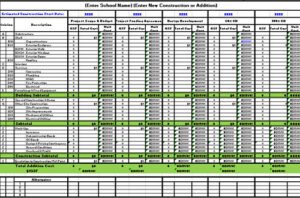
U-value calculations will invariably be required when establishing construction strategies. A number of the terms have subtly similar meanings, and conflicting interpretations can be found across the internet. The various terminologies, and how they relate to one another, are explained in this article.
U-value, or thermal transmittance (reciprocal of R-value)
Thermal transmittance, also known as U-value, is the rate of transfer of heat through a structure (which can be a single material or a composite), divided by the difference in temperature across that structure. The units of measurement are W/m²K. The better-insulated a structure is, the lower the U-value will be. Workmanship and installation standards can strongly affect the thermal transmittance. If insulation is fitted poorly, with gaps and cold bridges, then the thermal transmittance can be considerably higher than desired. Thermal transmittance takes heat loss due to conduction, convection and radiation into account.
Calculating U-value
The basic U-value calculation is relatively simple. In essence, the U-value can be calculated by finding the reciprocal of the sum of the thermal resistances of each material making up the building element in question. Note that, as well as the material resistances, the internal and external faces also have resistances, which must be added. These are fixed values.
There are a number of standards that cover calculation methods for thermal transmittance. These are listed in the ‘Useful links and references’ section at the end of this article.
Simple U-value calculations can be made in the following way, by considering the building element’s construction layer-by-layer. Note, however, that this does not account for cold bridging (by wall ties for example), air gaps around insulation, or the different thermal properties of e.g. mortar joints. This example considers a cavity wall:
| Material | Thickness | Conductivity (k-value) | Resistance = Thickness ÷ conductivity (R-value) |
| Outside surface | – | – | 0.040 K m²/W |
| Clay bricks | 0.100 m | 0.77 W/m⋅K | 0.130 K m²/W |
| Glasswool | 0.100 m | 0.04 W/m⋅K | 2.500 K m²/W |
| Concrete blocks | 0.100 m | 1.13 W/m⋅K | 0.090 K m²/W |
| Plaster | 0.013 m | 0.50 W/m⋅K | 0.026 K m²/W |
| Inside surface | – | – | 0.130 K m²/W |
| Total | 2.916 K m²/W | ||
| U-value = | 1 ÷ 2.916 = | 0.343 W/m²K |
Download this excel sheet now U-Value Calculator

